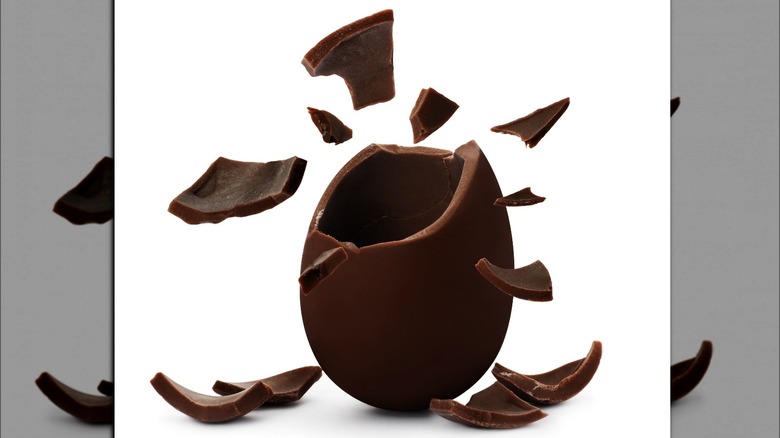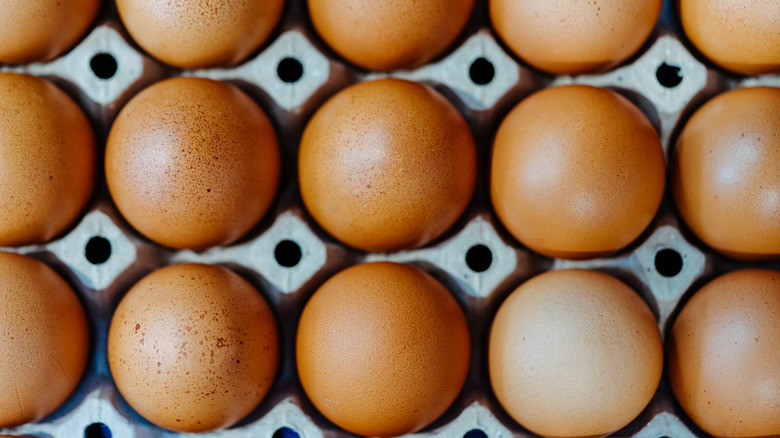The Bizarre Mathematical Discovery Scientists Just Made About Eggs
Do you remember graphing parabola shapes in high school geometry class? Maybe you've repressed the memory because it was too unpleasant. Then again, maybe you really enjoyed parabolas and continued in geometry to learn how to graph shapes in three dimensions, not just two. If that's the case, then you took one step closer to an intriguing discovery scientists just made.
The formula for a parabola — even the 3D version of a parabola — is relatively easy (although this isn't the place to get into all that). But until now, mathematicians had never figured out the formula for one of the most recognizable shapes in the world: the egg. You can come up with approximate egg shapes using high school math — specifically, variations on the formula for an ellipse (via Mathematische Basteleien). But that approach would only give you partial credit on a geometry test. Scientists in England and Ukraine have nailed down the exact formula for the shape of any bird egg found in nature, based on four easy measurements: the egg's length, its width, how much its vertical axis shifts, and the egg's diameter at a point one-fourth of the way down the egg's axis (via University of Kent).
At this point, some of you might be thinking the same thing you thought in your high school math classes: "When am I ever going to use this in real life? Is this going to be on the test?"
The egg shape formula can be applied in architecture and the food industry
You may never need the equation describing an egg's shape in your day-to-day lives. But engineers are already busy figuring out how to improve our world with this discovery. It turns out the egg shape formula has a lot of applications (via University of Kent).
Some scientists refer to the egg as "the perfect shape." There's a good reason why the egg has been life's starting point for more than 10,000 species over millions of years, from dinosaurs to the chicken supplying a key ingredient to your Egg McMuffin. Eggs are large enough to hold an embryo while being small enough to exit the mother's body. Its odd dimensions ensure the egg won't roll away from the nest, and the shape is ideal for bearing the most weight with a minimal amount of material. If evolution had a hall of fame, the egg would be one of the main attractions.
Now that we humans have an exact mathematical model for the egg, we can use this "perfect shape" to our advantage. We can apply it to architecture, considering how good the shape is at bearing loads. We can imagine egg-shaped single-person submarines or spaceships, which should be stronger than spheres. In a more down-to-earth application, egg processing facilities will be able to handle and store eggs more efficiently, now that we can build equipment that matches an egg's shape exactly.

